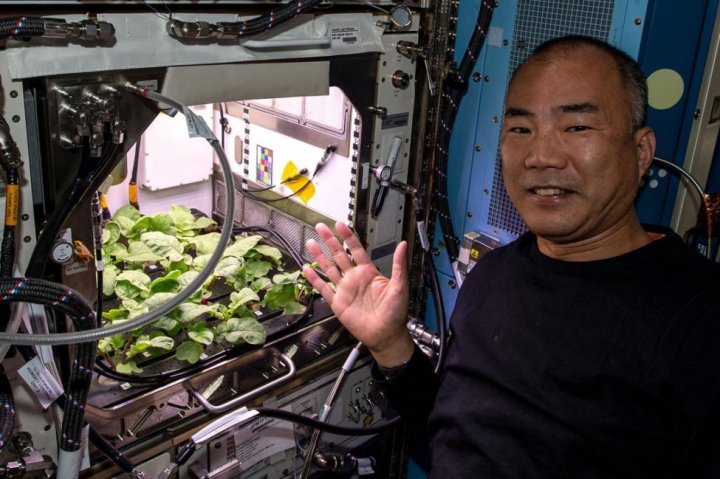
At the end of last year, astronauts on board the International Space Station achieved something impressive — they grew radishes in the microgravity environment of space for the first time. Now, they get to enjoy the fruits of their labors, as they were allowed to eat some of the radish crop before sending the rest back to Earth for further research.
Growing crops in space is difficult because plants react strangely to microgravity, though scientists are still learning why. Lettuce, cress, and other leafy green vegetables have been grown successfully before, but this was the first time that more substantial radishes had been grown. NASA astronaut Kate Rubins carefully harvested the crop of 20 radish plants before planting a second crop, with each taking 27 days to mature.
Growing fresh food in space is important not only to keep astronauts healthy by providing them with nutrients but also to provide a psychological boost. Eating the same pre-packaged foods every day is psychologically wearing, in a phenomenon called food monotony. That’s why astronauts love to receive care packages: Small parcels of condiments and snacks which are sent in the cargo ships which carry research equipment to the ISS.
So the astronauts were given permission to eat some of the radishes they worked so hard to grow, with the rare experience of a fresh vegetable being something that is in great demand in space.
The chamber in which the radishes were grown is made by a company called Techshot. Its director of Florida operations, Dave Reed, said in a statement that it was a lucky chance that the harvest happened to fall on New Year. “The radishes looked great,” he said. “We harvested 19, and nine were offered to the crew to eat. The other 10 radishes were frozen for return to Earth and for post-flight analysis.”
If you’re worried that the astronauts may be consuming space germs along with their vegetables, the experts say there’s no need to be concerned. The radishes were grown in a bed of clay balls in highly controlled conditions in the ISS’s Advanced Plant Habitat where levels of water, fertilizer, and light could be monitored exactly. “The radishes grown on the space station are cleaner than anything you’d buy at the store,” said lead researcher Karl Hasenstein.
And as for the taste? Astronaut Kate Rubins reportedly commented that the cosmic radishes were just as tasty as the ones she had grown in her own garden.
Editors' Recommendations
- Psyche spacecraft sends data back to Earth using lasers for the first time
- What kind of view will ISS astronauts get of the solar eclipse?
- Amazing Earth photos shared by outgoing ISS astronaut
- How to watch SpaceX Crew-8 launch to the space station tonight
- NASA astronauts need good weather for Crew-8 launch. Here’s how it’s looking




